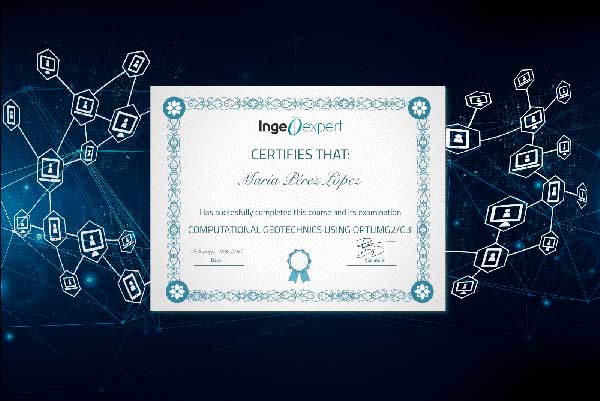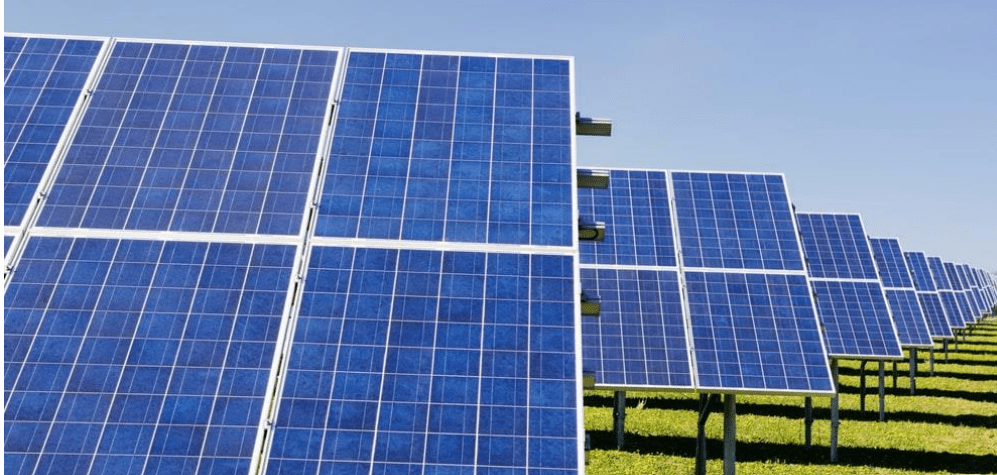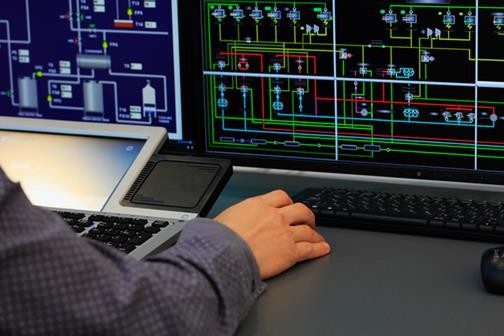Energy efficiency and conversion
Online course |
|
50 hours / 12 weeks |
|
|
Dates: 29th of July to 2nd of December |
| Unemployed Or Student | Standard |
| $335 | $432 |
In collaboration with Trans Pacific Energy, Inc.
Introduction
The purpose of this course is to stimulate and motivate the participants to think about how energy efficiency-enhancing measures and technologies available could be implemented in industrial facilities and installations to optimize their performance and improve their operation efficiencies. Energy efficiency saves money, increases the resilience and reliability of the electric grid, and provides environmental, community, and health benefits. Reducing energy consumption and energy efficiency is also good for the planet. It can help to reduce air and water pollution from coal- and gas-fired power plants and avoid negative impacts on critical ecosystems. Energy efficiency delivers several environmental benefits. It notably reduces GHG emissions, both direct emissions from fossil fuel combustion or consumption, and indirect emissions reductions from electricity generation.
Objectives
This course includes the most practical energy-saving measures in the different industries and the building sector Also this course is intended to help participants learn the science and main principles behind renewable energy, energy efficiency, and carbon reduction. Develop the technical capabilities and expertise and problem solving-ability critical and crucial to helping industry and government agencies to reduce energy-related carbon emissions and combat climate change and develop an Energy Management system and a set of practices that create a culture of continual improvement in the energy performance process and achieve energy, cost savings and use useful tools to track energy use and make informative decisions and help to implement energy saving practices.
Limited places.
Module 1. PROGRAM BACKGROUND
Module 2. TYPES of ENERGY (0.5 Week)
2.1. DIFFERENT FORMS OF ENERGY
2.2. ENERGY AND SUSTAINABILITY
2.3. IS YOUR BUSINESS “ENERGY INTENSIVE”?
2.4. THE EFFICIENT AND INEFFICIENT USE OF ENERGY
2.2.1. Conversion efficiency
2.2.2. Energy efficiency indicators
2.2.3. Improvement of energy efficiency
Module 3. ENERGY MANAGEMENT (0.5 Week)
3.1. PRINCIPLES OF ENERGY MANAGEMENT
3.2. ENERGY SERVICE COMPANIES (ESCOS)
3.2.1. Function of ESCOs in Energy Efficiency Improvement
3.2.2. Retrofit Isolation Method
3.2.3. Whole Facility Method
Module 4. ENERGY AUDITING (1 Week)
4.1. AUDIT INITIATION
4.2. AUDIT PREPARATION
4.2.1. Gathering data and information
4.2.2. The Auditor’s Toolbox
4.3. AUDIT EXECUTION
4.3.1. Physical and Operational Data for the Facility
4.3.2. Conducting the Audit Visit
4.3.3. Post-Audit Analysis
4.3.4. Conclusions and recommendations
4.4. AUDIT REPORT
4.4.1. Detailed Energy Audit Report Format
4.4.2. Simplified Energy Audit Report Format
4.5. POST-AUDIT ACTIVITIES – IMPLEMENTING ENERGY EFFICIENCY MEASURES
Module 5. LIGHTING SYSTEM (0.5 Week)
5.1. INTRODUCTION
5.2. DESCRIPTION OF SAVING POTENTIALS
5.2.1. Efficacy
5.2.2. Lighting System Components
5.2.3. Tentative lighting systems evaluation worksheet
Module 6. ELECTRICAL SYSTEMS (0.5 Week)
6.1. ENERGY MANAGEMENT OPPORTUNITIES
6.1.1. Understanding electrical billings
6.1.2. Time-shifting consumption and real-time pricing
6.2. REDUCING PEAK DEMAND
6.2.1. Reducing energy consumption
6.2.2. Improving the power factor
6.2.3. Tentative electrical systems evaluation worksheet
Module 7. BOILER PLANT SYSTEMS (2 Week)
7.1. BOILER TYPES AND CLASSIFICATION
7.1.1. Fire tube boilers
7.1.2. Water tube boilers
7.1.3. Packaged boilers
7.1.4. Fluidized bed combustion (FBC) boilers
7.1.5. Fouled heat-exchange surfaces
7.2. TYPICAL CALORIC VALUE OF FUELS
7.2.1. Parameters in coal combustion
7.2.2. Parameters for good efficiency in fuel oil combustion
7.2.3. Gaseous fuels
7.3. HEAT LOST IN FLUE GAS
7.3.1. The Direct Method Testing
7.3.2. The Indirect Method Testing
7.4. TENTATIVE TIPS FOR ENERGY EFFICIENCY IMPROVING IN BOILERS
7.4.1. Tentative boiler plant systems evaluation worksheet
7.5. STEAM AND CONDENSATE SYSTEMS
7.5.1. Important properties of steam
7.5.2. Components of Steam and Condensate Systems
7.5.3. Steam Traps and their application
7.5.4. Energy Conservation Opportunities in Steam Systems
7.5.5. Tentative steam and condensate systems evaluation worksheet
Module 8. HEATING, COOLING, VENTILATING, AND AIR-CONDITIONING SYSTEMS (2Weeks)
8.1. FACTORS FOR PROPER HANDLING OF HEATING/COOLING EQUIPMENT
8.1.1. Cleanliness of heat transfer surfaces
8.1.2. Insulating heating and cooling equipment
8.1.3. Reduce humidification requirements
8.2. ENERGY MANAGEMENT OPPORTUNITIES
8.2.1. Cost-reduction measures
8.2.2. Other low-cost EMOs
8.2.3. Other retrofit EMOs
8.3. COOLING SYSTEMS
8.3.1. Refrigeration
8.3.2. Safety classification of refrigerants
8.3.3. Chillers
8.3.4. Heat pump systems
8.3.5. Cost-reduction measures
8.4. VENTILATION
8.4.1. Principles of ventilation
8.4.2. Energy efficiency savings
8.5. AIR-CONDITIONING SYSTEMS
8.5.1. Single Duct Systems
8.5.2. Variable Air Volume Systems
8.5.3. Reheat Systems
8.5.4. Multizone Systems
Module 9. WATER AND COMPRESSED AIR SYSTEMS (1 Week)
9.1. WATER HEATING/COOLING SYSTEMS
9.2. COMPRESSED AIR SYSTEMS
9.2.1. Efficient Operation of Compressed Air Systems
9.2.2. Compressor Modulation by Optimum Pressure Settings
.9.2.3. Avoiding Air Leaks and Energy Wastage
9.2.4. Checklist for Energy Efficiency in Compressed Air System
Module 10. FANS AND PUMP (0.5 Week)
10.1. MOTORS AND DRIVES
10.1.1. Peculiarities of motors and drives
10.1.2. Tips for energy efficiency improving in motors and drives
10.2. FANS
10.2.1. Tips for energy efficiency improving in fans
10.3. PUMPS
10.3.1. Tips for energy conservation in pumping systems
Module 11. COMPRESSORS AND TURBINES (0.5 Week)
11.1. COMPRESSORS
11.1.1. Positive Displacement Compressors
11.1.2. Compressor Efficiency Definitions
11.2. TURBINES
11.1.1. Types of turbines
11.1.1. Energy efficiency improving
Module 12. MEASURING, METERING, MONITORING, AND AUTOMATIC CONTROLS (1 Week)
12.1. THE NEED FOR AUTOMATIC CONTROLS
12.1.1. Elements of automatic control
12.1 2. Accuracy150
12.2. TYPES OF CONTROL SYSTEMS
12.2.1. Self-Contained Controls Systems
12.2.2. Pneumatic Controls Systems
12.2.3. Electric Control Systems
12.2.4. Electronic Control Systems
112.2.5. Digital Control System
12.3. EQUIPMENT FOR AUTOMATIC CONTROLS
12.3.1. Sensors
12.3.2. Controllers
12.3.3. Controlled devices
12.3.4. Advanced technology for effective facility control
12.4. ENERGY MANAGEMENT OPPORTUNITIES
12.4. ENVIRONMENTAL CONSIDERATIONS
Module 13. FURNACES, DRYERS, AND KILNS (0.5 WeeK)
13.1. FURNACES
13.1.1. Types and Classification of Different Furnaces
13.1.2. Heat Transfer in Furnaces
13.1.3. Characteristics of an Efficient Furnace
13.1.4. Tips for improving energy efficiency in furnaces
13.2. DRYING TECHNOLOGIES
13.3. ENERGY EFFICIENCY IMPROVING
13.4. ENERGY MANAGEMENT OPPORTUNITIES
Module 14. WASTE HEAT RECOVERY (0.5 week)
14.1. HEAT RECOVERY TECHNOLOGIES
14.1.1. Direct usage
14.1.2. Heat exchangers
14.1.3. Heat pumps
14.1.4. Vapour recompression
14.1.5. Multi-stage operations
14.2. ENERGY MANAGEMENT OPPORTUNITIES
Module 15. COMBINED HEAT AND POWER (CHP) (0.5 Week)
15.1. CHP TECHNOLOGY
15.1.1. Biomass CHP
15.2. ENERGY MANAGEMENT OPPORTUNITIES
Module 16. ALTERNATIVE OPPORTUNITIES TO IMPROVING ENERGY EFFICIENCY (1 Week)
16.1. SOLAR ENERGY
16.2. THERMAL STORAGE SYSTEMS
16.3. ABSORPTION AND GEOTHERMAL HEAT PUMPS
16.3.1. Absorption Heat Pumps
16.3.2. Geothermal Heat Pumps
16.4. WASTE HEAT FROM PROCESS STREAMS
16.4.1. Benefits
16.4.2. Enhancing Waste Heat with Heat Pumps
16.4.3. Open Waste-Heat Exchangers
16.4.4. Serial Use of Process Air and Water
16.4.5. Closed Heat Exchangers
16.4.6. Runaround Systems
16.4.7. Reduction of energy costs
16.4. WASTE WATER TREATMENT PLANT (WWTP)
Module 17. APPENDIX: METHODS FOR CALCULATING CO2 EMISSIONS
17.1. METHODOLOGY FOR CO2 EMISSION CALCULATION
17.1.1. Emission factors. Methodology and values
17.2. SAVING CALCULATIONS
REFERENCES
Samuel Howard
Dr. Samuel is the Founder of TransPacific Energy Inc. He was for 25 years a Professor and Director of the Research Centre for Energy Conversion CRCE, the University of Moncton, a Research Associate at UNLV, and a lecturer at San Diego State University. and Professor and Director of (Renewable Energy Center (CER) at UCAUAE. He also regularly lectures in his area of expertise. He received his Ph. D from the University of Montreal, Canada, and JD from Novus Law School, US. He authored and co-authored over 240 published papers in highly indexed Scientific Journals on Energy Conversion and Management, Waste Heat to Power, Renewable Energy, Thermal storage, Refrigerant Mixtures, and their use in Waste Heat Recovery and Power Production as well as HVAC. Dr. Samuel works in hybrid renewable energy using magnetized nanofluids in PV solar, PV-thermal solar, CSP, Geothermal energy, Fuel Cell, Hydrogen production, Thermal Energy Storage, Biomass-driven ORCs, Wind Turbines, Solar-driven Desalination, and Solar-driven OTEC. Dr. Samuel specialized in remote power generation with Renewable Energy.
Dr. Samuel holds 14 patents in refrigerants and refrigerant mixtures, thermodynamics, energy management, storage and conversion, heat recovery, and green energy as well as renewable energy. He also offered online and in-class courses in renewable energy at SDSU, University of San Diego, AAU., and NDU. Dr. Samuel is a fellow of ASME and ASHRAE. He is also the Editor-in-chief of IESJ and associate editor and guest-editor of several highly indexed journals.
Also earned a Dispute Resolution Certificate from Pepperdine University, School of Law, CA, USA, and acts as a mediator and expert witness in energy management and renewable energy and industrial disputes and member of different Associations of Expert Witness.
The course is delivered online through our easy-to-use Virtual Campus platform. For this course, a variety of content is provided including:
– eLearning materials
– Videos
– Interactive multimedia content
– Live webinar classes
– Texts and technical articles
– Case studies
– Assignments and evaluation exercises
Students can download the materials and work through the course at their own pace.
We regularly update this course to ensure the latest news and state-of-the-art developments are covered, and your knowledge of the subject is current.
Live webinars form part of our course delivery. These allow students and tutors to go through the course materials, exchange ideas and knowledge, and solve problems together in a virtual classroom setting. Students can also make use of the platform’s forum, a meeting point to interact with tutors and other students.
The tutoring system is managed by email. Students can email the tutor with any questions about the course and the tutor will be happy to help.
This course is aimed at energy professionals from commercial business, government, institutional, municipal, and industry. Also, non-energy professionals are interested in learning more about the different measures to improve energy efficiency, reduce carbon emissions, and combat climate change.
Once a student finishes the course and successfully completes the assignments and evaluation tests, they are sent an accreditation certificate. The certificate is issued by Ingeoexpert to verify that the student has passed the course. It is a digital certificate that is unique and tamper-proof – it is protected by Blockchain technology. This means it is possible for anyone to check that it is an authentic, original document.
You will be able to download the certificate in an electronic format from the Virtual Campus platform. The certificate can be forwarded by email, shared on social networks, and embedded on websites. To see an example, click here.
Attending this course will qualify participants to work in the area of heating/cooling systems and improve building enclosures, manufacture Energy Star equipment and appliances, and install advanced lighting systems, as they’re also helping consumers, businesses, and local governments to save money, reduce emissions and fight climate change. Other energy-efficiency jobs are in construction, opportunities extend across manufacturing, professional services, and other sectors.
In collaboration with Trans Pacific Energy, Inc.
Introduction
The purpose of this course is to stimulate and motivate the participants to think about how energy efficiency-enhancing measures and technologies available could be implemented in industrial facilities and installations to optimize their performance and improve their operation efficiencies. Energy efficiency saves money, increases the resilience and reliability of the electric grid, and provides environmental, community, and health benefits. Reducing energy consumption and energy efficiency is also good for the planet. It can help to reduce air and water pollution from coal- and gas-fired power plants and avoid negative impacts on critical ecosystems. Energy efficiency delivers several environmental benefits. It notably reduces GHG emissions, both direct emissions from fossil fuel combustion or consumption, and indirect emissions reductions from electricity generation.
Objectives
This course includes the most practical energy-saving measures in the different industries and the building sector Also this course is intended to help participants learn the science and main principles behind renewable energy, energy efficiency, and carbon reduction. Develop the technical capabilities and expertise and problem solving-ability critical and crucial to helping industry and government agencies to reduce energy-related carbon emissions and combat climate change and develop an Energy Management system and a set of practices that create a culture of continual improvement in the energy performance process and achieve energy, cost savings and use useful tools to track energy use and make informative decisions and help to implement energy saving practices.
Limited places.
Module 1. PROGRAM BACKGROUND
Module 2. TYPES of ENERGY (0.5 Week)
2.1. DIFFERENT FORMS OF ENERGY
2.2. ENERGY AND SUSTAINABILITY
2.3. IS YOUR BUSINESS “ENERGY INTENSIVE”?
2.4. THE EFFICIENT AND INEFFICIENT USE OF ENERGY
2.2.1. Conversion efficiency
2.2.2. Energy efficiency indicators
2.2.3. Improvement of energy efficiency
Module 3. ENERGY MANAGEMENT (0.5 Week)
3.1. PRINCIPLES OF ENERGY MANAGEMENT
3.2. ENERGY SERVICE COMPANIES (ESCOS)
3.2.1. Function of ESCOs in Energy Efficiency Improvement
3.2.2. Retrofit Isolation Method
3.2.3. Whole Facility Method
Module 4. ENERGY AUDITING (1 Week)
4.1. AUDIT INITIATION
4.2. AUDIT PREPARATION
4.2.1. Gathering data and information
4.2.2. The Auditor’s Toolbox
4.3. AUDIT EXECUTION
4.3.1. Physical and Operational Data for the Facility
4.3.2. Conducting the Audit Visit
4.3.3. Post-Audit Analysis
4.3.4. Conclusions and recommendations
4.4. AUDIT REPORT
4.4.1. Detailed Energy Audit Report Format
4.4.2. Simplified Energy Audit Report Format
4.5. POST-AUDIT ACTIVITIES – IMPLEMENTING ENERGY EFFICIENCY MEASURES
Module 5. LIGHTING SYSTEM (0.5 Week)
5.1. INTRODUCTION
5.2. DESCRIPTION OF SAVING POTENTIALS
5.2.1. Efficacy
5.2.2. Lighting System Components
5.2.3. Tentative lighting systems evaluation worksheet
Module 6. ELECTRICAL SYSTEMS (0.5 Week)
6.1. ENERGY MANAGEMENT OPPORTUNITIES
6.1.1. Understanding electrical billings
6.1.2. Time-shifting consumption and real-time pricing
6.2. REDUCING PEAK DEMAND
6.2.1. Reducing energy consumption
6.2.2. Improving the power factor
6.2.3. Tentative electrical systems evaluation worksheet
Module 7. BOILER PLANT SYSTEMS (2 Week)
7.1. BOILER TYPES AND CLASSIFICATION
7.1.1. Fire tube boilers
7.1.2. Water tube boilers
7.1.3. Packaged boilers
7.1.4. Fluidized bed combustion (FBC) boilers
7.1.5. Fouled heat-exchange surfaces
7.2. TYPICAL CALORIC VALUE OF FUELS
7.2.1. Parameters in coal combustion
7.2.2. Parameters for good efficiency in fuel oil combustion
7.2.3. Gaseous fuels
7.3. HEAT LOST IN FLUE GAS
7.3.1. The Direct Method Testing
7.3.2. The Indirect Method Testing
7.4. TENTATIVE TIPS FOR ENERGY EFFICIENCY IMPROVING IN BOILERS
7.4.1. Tentative boiler plant systems evaluation worksheet
7.5. STEAM AND CONDENSATE SYSTEMS
7.5.1. Important properties of steam
7.5.2. Components of Steam and Condensate Systems
7.5.3. Steam Traps and their application
7.5.4. Energy Conservation Opportunities in Steam Systems
7.5.5. Tentative steam and condensate systems evaluation worksheet
Module 8. HEATING, COOLING, VENTILATING, AND AIR-CONDITIONING SYSTEMS (2Weeks)
8.1. FACTORS FOR PROPER HANDLING OF HEATING/COOLING EQUIPMENT
8.1.1. Cleanliness of heat transfer surfaces
8.1.2. Insulating heating and cooling equipment
8.1.3. Reduce humidification requirements
8.2. ENERGY MANAGEMENT OPPORTUNITIES
8.2.1. Cost-reduction measures
8.2.2. Other low-cost EMOs
8.2.3. Other retrofit EMOs
8.3. COOLING SYSTEMS
8.3.1. Refrigeration
8.3.2. Safety classification of refrigerants
8.3.3. Chillers
8.3.4. Heat pump systems
8.3.5. Cost-reduction measures
8.4. VENTILATION
8.4.1. Principles of ventilation
8.4.2. Energy efficiency savings
8.5. AIR-CONDITIONING SYSTEMS
8.5.1. Single Duct Systems
8.5.2. Variable Air Volume Systems
8.5.3. Reheat Systems
8.5.4. Multizone Systems
Module 9. WATER AND COMPRESSED AIR SYSTEMS (1 Week)
9.1. WATER HEATING/COOLING SYSTEMS
9.2. COMPRESSED AIR SYSTEMS
9.2.1. Efficient Operation of Compressed Air Systems
9.2.2. Compressor Modulation by Optimum Pressure Settings
.9.2.3. Avoiding Air Leaks and Energy Wastage
9.2.4. Checklist for Energy Efficiency in Compressed Air System
Module 10. FANS AND PUMP (0.5 Week)
10.1. MOTORS AND DRIVES
10.1.1. Peculiarities of motors and drives
10.1.2. Tips for energy efficiency improving in motors and drives
10.2. FANS
10.2.1. Tips for energy efficiency improving in fans
10.3. PUMPS
10.3.1. Tips for energy conservation in pumping systems
Module 11. COMPRESSORS AND TURBINES (0.5 Week)
11.1. COMPRESSORS
11.1.1. Positive Displacement Compressors
11.1.2. Compressor Efficiency Definitions
11.2. TURBINES
11.1.1. Types of turbines
11.1.1. Energy efficiency improving
Module 12. MEASURING, METERING, MONITORING, AND AUTOMATIC CONTROLS (1 Week)
12.1. THE NEED FOR AUTOMATIC CONTROLS
12.1.1. Elements of automatic control
12.1 2. Accuracy150
12.2. TYPES OF CONTROL SYSTEMS
12.2.1. Self-Contained Controls Systems
12.2.2. Pneumatic Controls Systems
12.2.3. Electric Control Systems
12.2.4. Electronic Control Systems
112.2.5. Digital Control System
12.3. EQUIPMENT FOR AUTOMATIC CONTROLS
12.3.1. Sensors
12.3.2. Controllers
12.3.3. Controlled devices
12.3.4. Advanced technology for effective facility control
12.4. ENERGY MANAGEMENT OPPORTUNITIES
12.4. ENVIRONMENTAL CONSIDERATIONS
Module 13. FURNACES, DRYERS, AND KILNS (0.5 WeeK)
13.1. FURNACES
13.1.1. Types and Classification of Different Furnaces
13.1.2. Heat Transfer in Furnaces
13.1.3. Characteristics of an Efficient Furnace
13.1.4. Tips for improving energy efficiency in furnaces
13.2. DRYING TECHNOLOGIES
13.3. ENERGY EFFICIENCY IMPROVING
13.4. ENERGY MANAGEMENT OPPORTUNITIES
Module 14. WASTE HEAT RECOVERY (0.5 week)
14.1. HEAT RECOVERY TECHNOLOGIES
14.1.1. Direct usage
14.1.2. Heat exchangers
14.1.3. Heat pumps
14.1.4. Vapour recompression
14.1.5. Multi-stage operations
14.2. ENERGY MANAGEMENT OPPORTUNITIES
Module 15. COMBINED HEAT AND POWER (CHP) (0.5 Week)
15.1. CHP TECHNOLOGY
15.1.1. Biomass CHP
15.2. ENERGY MANAGEMENT OPPORTUNITIES
Module 16. ALTERNATIVE OPPORTUNITIES TO IMPROVING ENERGY EFFICIENCY (1 Week)
16.1. SOLAR ENERGY
16.2. THERMAL STORAGE SYSTEMS
16.3. ABSORPTION AND GEOTHERMAL HEAT PUMPS
16.3.1. Absorption Heat Pumps
16.3.2. Geothermal Heat Pumps
16.4. WASTE HEAT FROM PROCESS STREAMS
16.4.1. Benefits
16.4.2. Enhancing Waste Heat with Heat Pumps
16.4.3. Open Waste-Heat Exchangers
16.4.4. Serial Use of Process Air and Water
16.4.5. Closed Heat Exchangers
16.4.6. Runaround Systems
16.4.7. Reduction of energy costs
16.4. WASTE WATER TREATMENT PLANT (WWTP)
Module 17. APPENDIX: METHODS FOR CALCULATING CO2 EMISSIONS
17.1. METHODOLOGY FOR CO2 EMISSION CALCULATION
17.1.1. Emission factors. Methodology and values
17.2. SAVING CALCULATIONS
REFERENCES
Samuel Howard
Dr. Samuel is the Founder of TransPacific Energy Inc. He was for 25 years a Professor and Director of the Research Centre for Energy Conversion CRCE, the University of Moncton, a Research Associate at UNLV, and a lecturer at San Diego State University. and Professor and Director of (Renewable Energy Center (CER) at UCAUAE. He also regularly lectures in his area of expertise. He received his Ph. D from the University of Montreal, Canada, and JD from Novus Law School, US. He authored and co-authored over 240 published papers in highly indexed Scientific Journals on Energy Conversion and Management, Waste Heat to Power, Renewable Energy, Thermal storage, Refrigerant Mixtures, and their use in Waste Heat Recovery and Power Production as well as HVAC. Dr. Samuel works in hybrid renewable energy using magnetized nanofluids in PV solar, PV-thermal solar, CSP, Geothermal energy, Fuel Cell, Hydrogen production, Thermal Energy Storage, Biomass-driven ORCs, Wind Turbines, Solar-driven Desalination, and Solar-driven OTEC. Dr. Samuel specialized in remote power generation with Renewable Energy.
Dr. Samuel holds 14 patents in refrigerants and refrigerant mixtures, thermodynamics, energy management, storage and conversion, heat recovery, and green energy as well as renewable energy. He also offered online and in-class courses in renewable energy at SDSU, University of San Diego, AAU., and NDU. Dr. Samuel is a fellow of ASME and ASHRAE. He is also the Editor-in-chief of IESJ and associate editor and guest-editor of several highly indexed journals.
Also earned a Dispute Resolution Certificate from Pepperdine University, School of Law, CA, USA, and acts as a mediator and expert witness in energy management and renewable energy and industrial disputes and member of different Associations of Expert Witness.
The course is delivered online through our easy-to-use Virtual Campus platform. For this course, a variety of content is provided including:
– eLearning materials
– Videos
– Interactive multimedia content
– Live webinar classes
– Texts and technical articles
– Case studies
– Assignments and evaluation exercises
Students can download the materials and work through the course at their own pace.
We regularly update this course to ensure the latest news and state-of-the-art developments are covered, and your knowledge of the subject is current.
Live webinars form part of our course delivery. These allow students and tutors to go through the course materials, exchange ideas and knowledge, and solve problems together in a virtual classroom setting. Students can also make use of the platform’s forum, a meeting point to interact with tutors and other students.
The tutoring system is managed by email. Students can email the tutor with any questions about the course and the tutor will be happy to help.
This course is aimed at energy professionals from commercial business, government, institutional, municipal, and industry. Also, non-energy professionals are interested in learning more about the different measures to improve energy efficiency, reduce carbon emissions, and combat climate change.
Once a student finishes the course and successfully completes the assignments and evaluation tests, they are sent an accreditation certificate. The certificate is issued by Ingeoexpert to verify that the student has passed the course. It is a digital certificate that is unique and tamper-proof – it is protected by Blockchain technology. This means it is possible for anyone to check that it is an authentic, original document.
You will be able to download the certificate in an electronic format from the Virtual Campus platform. The certificate can be forwarded by email, shared on social networks, and embedded on websites. To see an example, click here.
Attending this course will qualify participants to work in the area of heating/cooling systems and improve building enclosures, manufacture Energy Star equipment and appliances, and install advanced lighting systems, as they’re also helping consumers, businesses, and local governments to save money, reduce emissions and fight climate change. Other energy-efficiency jobs are in construction, opportunities extend across manufacturing, professional services, and other sectors.
More info
Finish this course and get a certificate based on Blockchain
Energy efficiency and conversion

Blockchain technology makes the certificate incorruptible, enabling companies to verifiy its autenticity.
Energy efficiency and conversion
| $335 | $432 | |
| Get more information |






Reviews
There are no reviews yet.